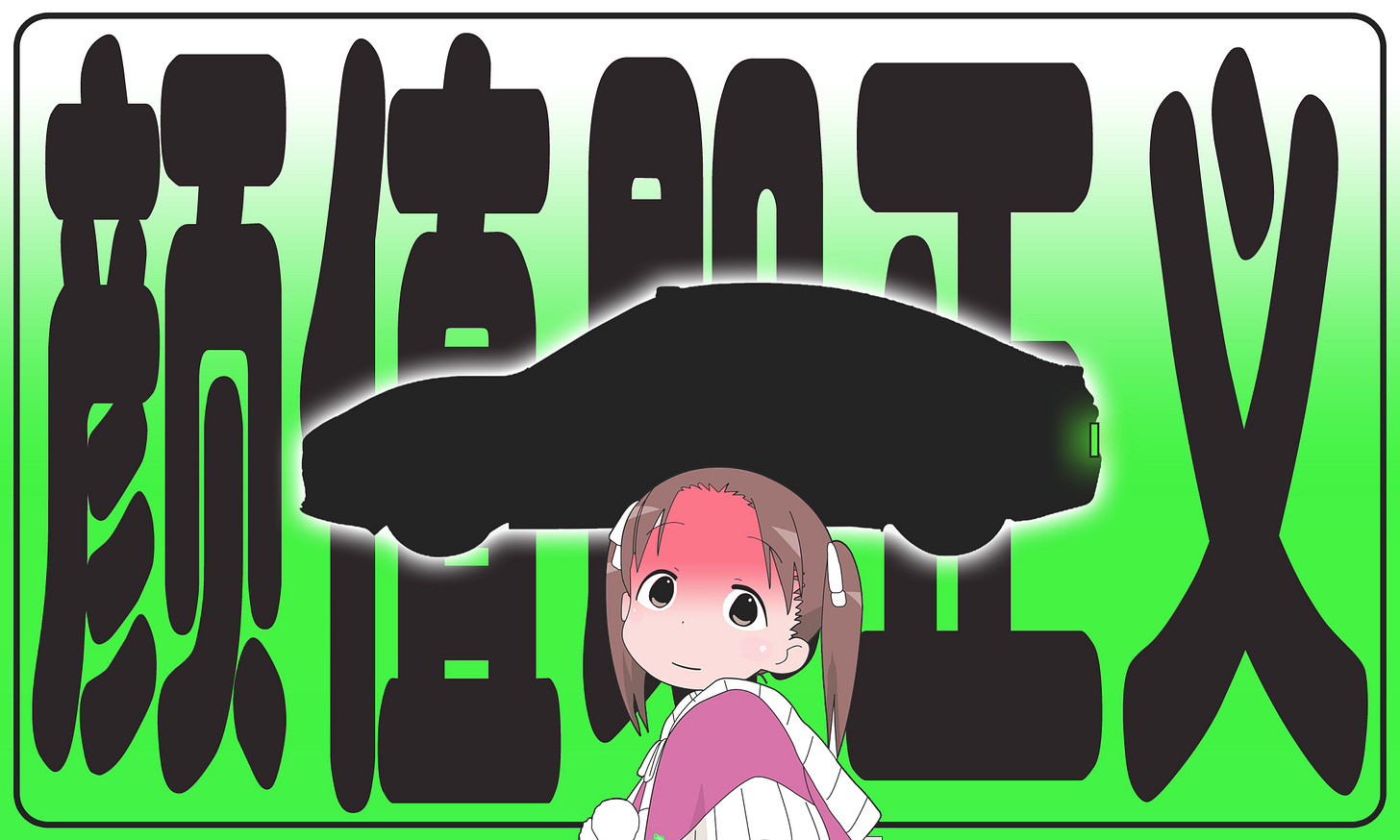"Looks are everything" — Phrase of the Week
China’s 'ugly' New Energy Vehicle license plates are becoming a problem

Our phrase of the week is: "looks are everything" (颜值即正义 yán zhí jí zhèng yì).
Context
One of China’s best-known entrepreneurs sparked widespread discussion during the Two Sessions (两会) last week.
Lei Jun 雷军—CEO and founder of Xiaomi 小米, a top smartphone maker and now a high-end New Energy Vehicle (NEV) producer—attended as a CPPCC delegate (政协代表).
The CPPCC, one of the Two Sessions, invites non-CCP officials—like entrepreneurs such as Lei Jun—to discuss and recommend (建议) policies.
While entrepreneurs have little real influence, the gathering offers valuable networking and PR opportunities, with state media coverage amplifying their media presence.
On 4 March, as the meetings began, Lei Jun published five proposals on his social media. Most addressed key challenges in the NEV sector. But tucked in at number four was a seemingly minor issue:
Recommendations on optimising designs of NEV license plates.
关于优化新能源汽车号牌设计的建议。
Guānyú yōuhuà xīn néngyuán qìchē hàopái shèjì de jiànyì
China’s NEV plates have a fluorescent green gradient with black numbers (渐变绿+黑色字符). First piloted in 2016, the design was chosen in a 2017 public vote with 145,000 participants.
But eight years on, Lei Jun argues the color is unappealing to young consumers who expect high aesthetics and personalization—and it clashes with sportier car colors.
Many in the industry agree.
Despite China’s leadership in sleek, futuristic EVs, the green plates remain widely disliked, as one industry commentator put it:
"If 'looks are everything' rules the car industry, then NEV green plates are its traitors."
“如果说‘颜值即正义’是车圈的生存法则,那新能源汽车的绿色号牌就是行业的‘叛徒’。”
Rúguǒ shuō ‘yán zhí jí zhèng yì’ shì chēquān de shēngcún fǎzé, nà xīnnéngyuán qìchē de lǜsè hàopái jiùshì hángyè de ‘pàntú’.”
And with that, we have our Sinica Phrase of the Week!
What it means
"Looks are everything" translates literally as "Looks are justice" (颜值即正义 yánzhí jí zhèngyì)—a popular Chinese internet slang phrase suggesting that being attractive is the ultimate advantage. If you look good, you're automatically in the right.
The phrase originated from the Japanese manga series Strawberry Marshmallow (草莓棉花糖 cǎoméi miánhuātáng), which follows the daily adventures of four elementary school girls and their older sister. Serialized in 2002, it was adapted into an anime series and a PlayStation 2 game in 2005.
Its tagline, "Cute is justice" (可爱即正义), gained traction in Japan after voice actress Ayako Kawasumi (川澄绫子) repeatedly used it in an interview. The phrase went viral and spread via Japan’s largest online forum at the time, 2CH (2channel).
2CH was a hub for internet culture, serving as the platform where many Japanese memes, including "Cute is justice,"made their way to China. From 2CH, the phrase entered Chinese online discussions through forums like Baidu Tieba (百度贴吧) and Tianya (天涯社区).
"Cute is justice" caught on in China but evolved as beauty standards shifted. It became "looks are justice" (颜值即正义), reflecting the belief that good looks confer social advantages. This led to the broader X 即正义 ("X is justice", or “X is everything”) meme format.
In the EV industry, where sleek design is crucial, "Looks are justice"—which we translate as “looks are everything”—explains why China's green license plates are so disliked. As competition intensifies, aesthetics matter as much as performance. Fluorescent green plates clash with car colors, making them an eyesore.
So, behind Lei Jun’s proposal is a deeper issue: ugly plates are hurting Xiaomi's sales—because for NEV consumers, "looks are everything."
Andrew Methven is the author of RealTime Mandarin, a resource which helps you bridge the gap to real-world fluency in Mandarin, stay informed about China, and communicate with confidence—all through weekly immersion in real news. Subscribe for free here.
Read more about how this story is being discussed in the Chinese media in this week’s RealTime Mandarin.



